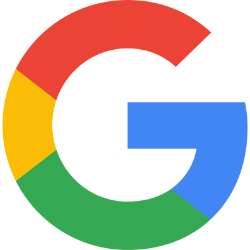Overall, Alphabet demonstrates strong business quality driven by its leading market position in search and advertising, robust financial performance, and innovative AI advancements. However, its reliance on advertising revenue and current capacity constraints in cloud services pose potential risks. Future prospects remain promising, particularly in the expansion of cloud services and AI applications, despite anticipated headwinds from currency fluctuations.
Analysis Date: February 4, 2025
Last Updated: March 12, 2025
Trailing Twelve Months (TTM) values provide a view of the company's performance over the last year.
Graham Value Metrics
Benjamin Graham's value investing approach focuses on finding stocks with a significant margin of safety between their intrinsic value and market price.
Intrinsic Value
Estimated fair value based on Graham's formula
$315.22
Current Market Price: $146.11
IV/P Ratio: 2.16x (>1.0 indicates undervalued)
Margin of Safety
Gap between intrinsic value and market price
54.0%
Graham recommended a minimum of 20-30% margin of safety
Higher values indicate a greater potential discount to fair value
ROE: 32.48475016223232
ROA: 5.893536121673003
Gross Profit Margin: 58.26768502532558
Net Profit Margin: 28.617898263225893
Trailing Twelve Months (TTM) values provide a view of the company's performance over the last year.
Strong Return on Equity
A return on equity of 32.48% indicates the company is effectively generating profits from shareholders' equity.
Healthy Profit Margins
GOOG boasts a net profit margin of 28.62%, showcasing strong profitability in its operations.
Moderate Dividend Yield
The dividend yield of 0.35% is relatively low, which may not attract income-focused investors.
About Profitability Metrics
Profitability metrics measure a company's ability to generate earnings relative to its revenue, operating costs, and other relevant metrics. Higher values generally indicate better performance.
Return on Equity (ROE)
Measures how efficiently a company uses its equity to generate profits
32.48%
10%
15%
Higher values indicate better returns for shareholders
TTM (as of 2025-04-16)
Return on Assets (ROA)
Measures how efficiently a company uses its assets to generate profits
5.89%
3%
7%
Higher values indicate better asset utilization
TTM (as of 2025-04-16)
Gross Profit Margin
Percentage of revenue retained after accounting for cost of goods sold
58.27%
20%
40%
Higher values indicate better efficiency in production
TTM (as of 2025-04-16)
Net Profit Margin
Percentage of revenue retained after accounting for all expenses
28.62%
8%
15%
Higher values indicate better overall profitability
TTM (as of 2025-04-16)
Low Debt Levels
0.08
Debt-to-Equity Ratio
A debt-to-equity ratio of 0.08 shows that GOOG maintains low leverage, indicating financial stability.
Strong Interest Coverage
522.74
Interest Coverage Ratio
An interest coverage ratio of 522.74 indicates the company can comfortably meet its interest obligations.
Low Cash Ratio
With a cash ratio of 0.26, the company may face challenges in covering short-term liabilities with liquid assets.
About Financial Health Metrics
Financial health metrics assess a company's ability to meet its financial obligations and its overall financial stability.
Debt to Equity Ratio
Total debt divided by total equity
0.08x
1.0x
2.0x
Lower values indicate less financial leverage and risk
Less than 1.0 is conservative, 1.0-2.0 is moderate, >2.0 indicates high risk
Q4 2024
Current Ratio
Current assets divided by current liabilities
1.84x
1.0x
2.0x
Higher values indicate better short-term liquidity
Less than 1.0 is concerning, 1.0-2.0 is adequate, greater than 2.0 is good
Q4 2024


